-
TrackoBit
Manage commercial vehicles with the new-age Fleet Management Software
TrackoBit -
TrackoField
Streamline your scattered workforce with Field Force Management Software
TrackoField -
Features Resources
-
Blog
Carefully curated articles to update you on industrial trends. -
White Paper
Insightful papers and analysis on essential subject matters. -
Glossary
Explore an alphabetical list of relevant industry terms. -
What’s New
Get TrackoBit & TrackoField monthly updates here. -
Case Study
Explore the cases we solved with our diverse solutions. -
Infographics
Explore key topics through visually impactful infographics.
-
About Us
Get to know TrackoBit: our team, ethos, values, and vision. -
Careers
Join the most dynamic cult of coders, creatives and changemakers. -
Tech Support
Learn about our technical support team and services in detail. -
Events
Check out the exhibitions where we left our marks and conquered. -
Contact Us
Connect with us and let us know how we can be of service.
What is Route Planning in Logistics?
- Author:Ayushi Nagalia
- Read Time:11 min
- Published:
- Last Update: January 31, 2025
Table of Contents
Toggle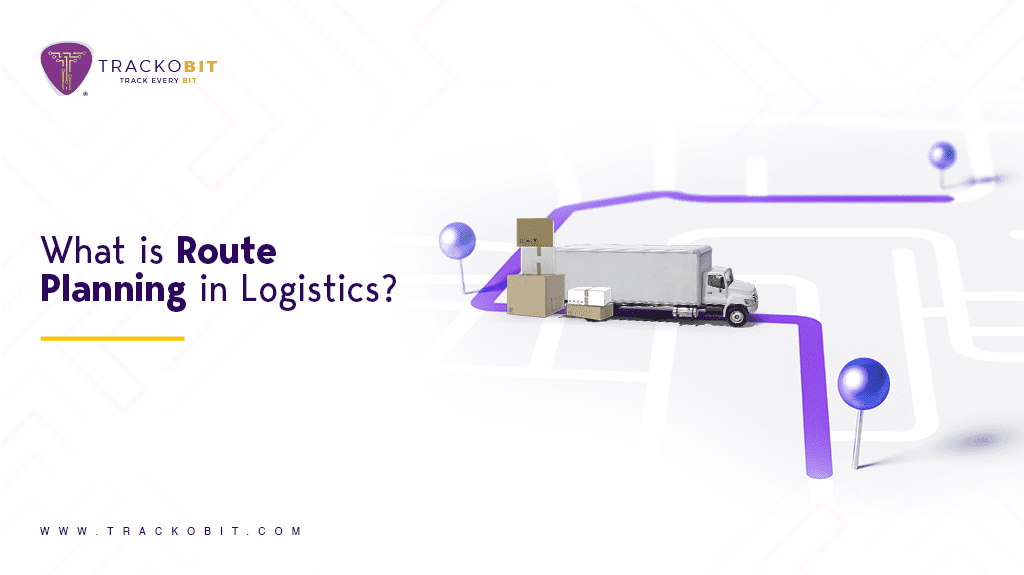
Intangible resources are generally limited and oftentimes negated, yet cause a massive impact on your fleet’s bottom line.
Table of Contents
ToggleEngine hours, transportation time, and tire health are some crucial things for fleet managers to preserve. And fleet management software solutions such as route planning help them do exactly that.
Planning routes and saving 3 liters of fuel from one vehicle in one trip might not seem like a lot. However, the figures start to make a lot of sense when we account for a fleet of over 50 vehicles that make multiple trips each day.
Route planning solutions are a boon of fleet management software for logistics management. Let us explain how in this blog!
What is Route Planning?
Route planning is computing a route for your vehicle from the start to the end while covering the required midpoints. It involves using geospatial information to suggest the directions your driver should follow to conduct their task(s).
The terms route planning and route optimization are often used interchangeably which is not correct. While their amalgamation makes the best use of trip management systems, route planning itself is a standalone feature.
Route planning reaps businesses maximum value from each trip while fulfilling an ETA. It is pre-planning supply chain operations keeping all resources’ consumption in mind.
Through effective route planning systems, companies can make their deliveries smoother, more effective, and resource and time-sensitive.
Why is Route Planning Important in Logistics?
Logistics businesses have hundreds of vehicles in their fleet. Therefore, they have to make sure that they account for the smallest of KPIs that allow for meticulous monitoring. Route planning helps them by solving the following issues.
- Need to Know: Route planning gets insights into how specific routes affect operations. Information about operational time consumption and costs is crucial for strategizing.
- Operational Planning: With the aforementioned information, managers can plan operations in the most cost and time-efficient manner, boosting profits.
- Customer Commitments: Each trip comes with further delivery commitments to the end consumer. Without route planning, fulfilling these commitments becomes unmanageable.
- Enhanced Budgeting: Route management is directly linked to setting fuel, operations, and other fleet budgets. The better and enhanced the insights, the better the budgeting.
- Benefits for Large Fleets: Larger fleets benefit better from route management solutions because even a liter of fuel savings translates into thousands of liters throughout.
Why Does Traditional Tour Management Fail?
Traditional route planning was the norm before fleet management software systems came into being. While they served fleet operators well before technological advancement, they fail miserably in the current time. Wondering why? Here are a couple of noteworthy reasons!
Manual Dependency
Traditional fleet management entails manual dependency. Managers or route planners have to manually analyze each route and check the length, traffic density, and safety of each route.
This manual process is excessively time-consuming, time that can be devoted to strategizing. Moreover, manual route calculations cannot be completely accurate and are prone to errors and miscalculations.
No Real-time Visibility
Real-time visibility is a spectacular way of optimizing fleet functions. After all, managers get an idea of where each of their vehicles is without having to connect calls to drivers. Moreover, real-time visibility gives managers an idea of any anomalies on the route, showing them a practical trip performance on possible routes.
The lack of real-time visibility keeps route planners from understanding route traffic density during certain hours or days. Moreover, without live vehicle tracking status, determining accurate ETAs to keep the next levels or end customers posted also becomes improbable.
Poor Resource Utilization
The primary purpose of route planning is to allow better resource utilization.
Route planning helps reduce time and fuel consumption – yes. However, it also saves engine hours, tire wear and tear, and driver fatigue. When routes are not properly optimized through insightful and accurate data, resources are bound to get wasted.
Traditional route management only guarantees managers have control over the route drivers follow. It doesn’t guarantee that the determined route is the best for fleet functions and operations.
Multi-drop Delivery Issues
Most logistics businesses rely on multi-stop deliveries or pick-ups to increase efficiency. This way, one vehicle can cover multiple places instead of managers having to dispatch multiple vehicles for the same purpose.
With manual fleet management and route planning, multi-stop deliveries become a hassle. This is because of the manual difficulty in figuring out load capacity and estimated time consumption between midpoints.
Risking Customer Satisfaction
As mentioned before, without real-time tracking, managers cannot offer ETAs to further links in the supply chain or the end customers. Therefore, the delivery system becomes less smooth and more incident-based than required to keep customers informed and satisfied. Traditional route management is more driver-focused than operations or results-oriented.
How Vehicle Tracking Software Fulfills Multi-stop Route Planning
Fulfilling multi-stop routes is one of the biggest challenges of manual trip management. The process can be extremely confusing and devising which route will consume how many resources is almost impossible. Luckily, fleet management software solutions are capable of fulfilling multi-stop route planning as long as it has access to the following information:
- Locations: The software should have access to specific geocodes to the locations involved.
- Capacity: You need to provide the vehicle’s load capacity and how much consignment it needs to pick from each location.
- Time Slots: Always input the time your driver has to stay at each mid-point to help software devise accurate expected ETAs.
- Driving Time: For further accuracy, software should be aware of how much time it’ll take for the vehicle to reach from one point to another. However, this is essential data that all fleet management solutions record.
How Fleet Management Software Simplifies Delivery Through Trip Management?
Logistics businesses use fleet management software systems to simplify deliveries. They need to make sure that each trip is as smooth and effective as possible to increase business profits and customer satisfaction.
Here are some things vehicle tracking solutions can do to improve trip management for the logistics sector.
- Choose the Shortest Route: Through automated systems and accurate data insights and calculations, trip management solutions can find the shortest and most efficient route for each trip.
- Trip Status, PODs, and ETAs: Real-time tracking in route management systems allows managers to know each trip’s live status, estimated time of arrival, and proof of delivery. This massively smoothens the delivery process.
- Route Deviation Alerts: There is a reason why managers assign the routes to their drivers. If drivers deviate from the assigned routes, managers get quick updates so that they can avoid the loss associated with not following optimized routes.
- Higher Stoppage Density: While implementing multi-stop route planning, software formulates routes with the highest stoppage density. Therefore, within one trip, vehicles can cover more stops and complete a higher number of tasks.
- Archiving Trips: Software can store route information. Therefore, managers get pre-insights on how vehicles performed on specific routes. Resultantly, all they have to do is assign an already designed route to drivers, shortening the planning process.
- Route Insights: Fleet management software offers route insights so that managers can see each route’s traffic density, safety, and time consumption, but also their relative effects on the entire fleet with metrics such as fuel consumption and vehicle health.
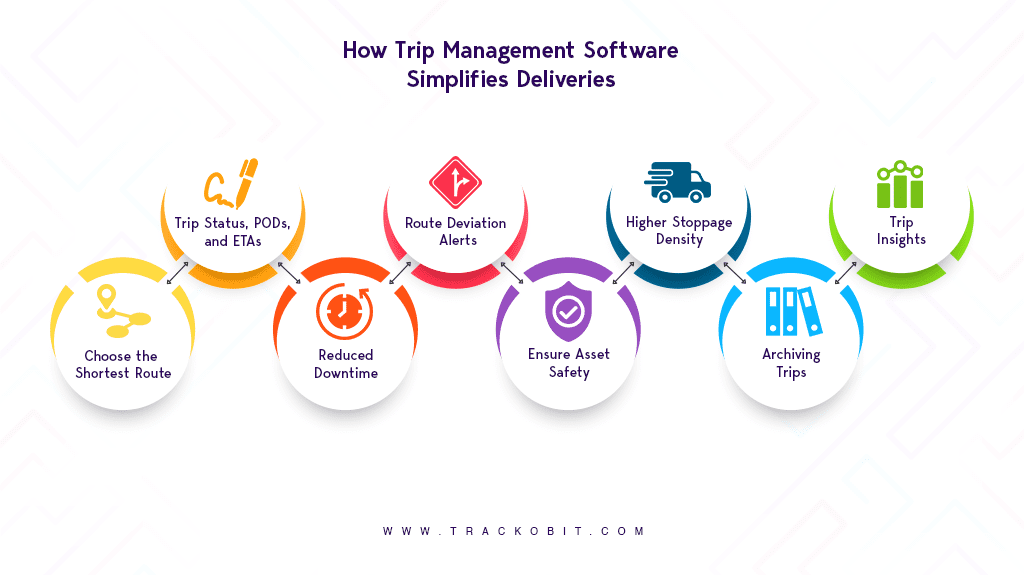
What Are The Benefits of Tour Management Automation?
Sure, you’ve invested in a good fleet management software system and are now managing routes effectively. Yes, it does reduce admin time and help make routes more time and cost-effective. However, are there any practical benefits of tour management to the business as a whole? Let’s learn in this section.
Automated Admin Tasks
As we read from the section about shortcomings of traditional route management software, they tend to take up too much admin time. This time can be instead used for more important tasks such as budget monitoring or fleet operations strategizing.
Therefore, with the help of tour management software, managers enjoy admin task automation. Instead of having to manually collect and analyze route data, managers get pre-suggested routes from software. Other tasks such as understanding driver behaviour and fuel consumption are also done automatically by the software, saving time and energy.
Intelligent Dispatches
Route planning is not only about planning the most efficient route, but also about the right time for the vehicle to be on that route. After all, the same route might take a vehicle four hours to complete the trip in the morning hours, but six in the afternoon due to extreme traffic.
With the help of route management systems, dispatches can be highly strategized. Therefore, even on the same route, the software has the potential of saving more resources according to dispatch and trip time.
Automatic Proofs of Delivery
With live-tracking in trip management solutions, managers and the receiver can get automatic proofs of delivery.
Since managers are aware of where the vehicle is and can be notified when it has deviated from its assigned route, they can also be informed of when the vehicle has reached its destination. These proofs of delivery also serve as live trip updates in case of multi-stop route planning.
Resource Optimization
Resource optimization is not the primary but the biggest practical benefit that comes out of optimum route planning. After all, the routes are defined in a manner that they are supposed to take up the least time and fuel from the vehicle.
Other than the obvious time and fuel, other resources that route planning can save are:
- Driver fatigue
- Engine health
- Tire health
Higher Consignment Safety
Sensitive products such as tobacco, fuel, alcohol, and pharmaceutical drugs can be flammable, contaminating, or are prone to theft.
Therefore, with the help of software and data analysis, managers need to find the safest routes. The safer the consignment, vehicles, and drivers on the way, the better for fleet operations and management.
Reduced Operational Costs
Obviously, when the company saves resources, it also ends up cutting down on operational costs. For example, fuel is the biggest expenditure in a fleet. When the amount of fuel consumed by vehicles is reduced through route planning, operational costs go down.
Indirect ways for the operational coast to go down can be through time-saving. For each hour saved by a vehicle on a single trip, they might end up having space for two-three extra trips per month, affecting the cost of operations of acquiring new vehicles for the same purpose.
Improved Profits
As operational costs fall, profits increase. If the money is not being spent on operations, it is saved for the company, right?
Reduced operational costs, reduced theft, better customer relations, and smooth supply chain management – all these factors serve to increase the organization’s bottom line.
How to Choose the Right Route Planning Software For Your Logistics Business?
You know how important route planning is for resource optimization, customer satisfaction, delivery quality, and business profits. Therefore, you should ensure that the software you choose to manage routes is the best one for you, right?
Here are some crucial features each fleet management software system offering route planning should have. Otherwise, it is not worth investing in!
-
- Real-time Visibility: The software you choose to use should offer real-time visibility which is not vehicles appearing as buffering dots but as moving bullets on a map. It is the potency of live vehicle tracking that can make or break the fleet management system you use for route monitoring.
-
- Geocoder Tools: The best route management software comes with geocoder tools that allow managers to pick specific geocodes by only entering target locations’ address lines This allows locational data to be much more accurate than inaccurately pointing pins on a map.
- Performance Reports: Route management systems should measure and offer bite-sized reports on how vehicles perform on each route, how long each trip takes, and what the traffic density is like on specific paths. This aids informed decision-making.
- Route Archives: Your software should have historical data storage and a trip archive. The more the data software collects, the better-analyzed routes it will suggest and the reports offered would also be more informational.
- Scalability: Even if you are starting with a fleet of 10 vehicles, make sure that the software you use can handle your business if you increase to 100 vehicles in a year.
- Support: Even with the best features and functionality, if the software provider doesn’t provide proper technical support, it is not worth it. After all, your issues should be resolved quickly so that your operations do not suffer and you face the least downtime, right?
Resource Optimization is a Few Clicks Away!
Preserving resources has multiple benefits for the organization. Firstly, it obviously reduces operations costs. Secondly, it helps increase business profits.
So, why would you wait any longer and risk wasting massive tangible and intangible resources in your organization?
Try TrackoBit, India’s fastest-growing telematics software to reduce resource consumption in your fleet. Economic fleet management can be just a few clicks away; request a demo and see your profits boost for yourself!
Ayushi Nagalia is a Senior Content Specialist at TrackoBit. She is a marketing maverick with a lush background in literature. With years of experience crafting content for various niches, she speciali... Read More
Related Blogs
-

How to Use Driver Behavior Reports as a Sales Hook to Close Big Fleets
Tithi Agarwal October 16, 2025TrackoBit’s driver behavior reports empower fleet providers to win big contracts by showcasing safety, efficiency, and measurable ROI.
-
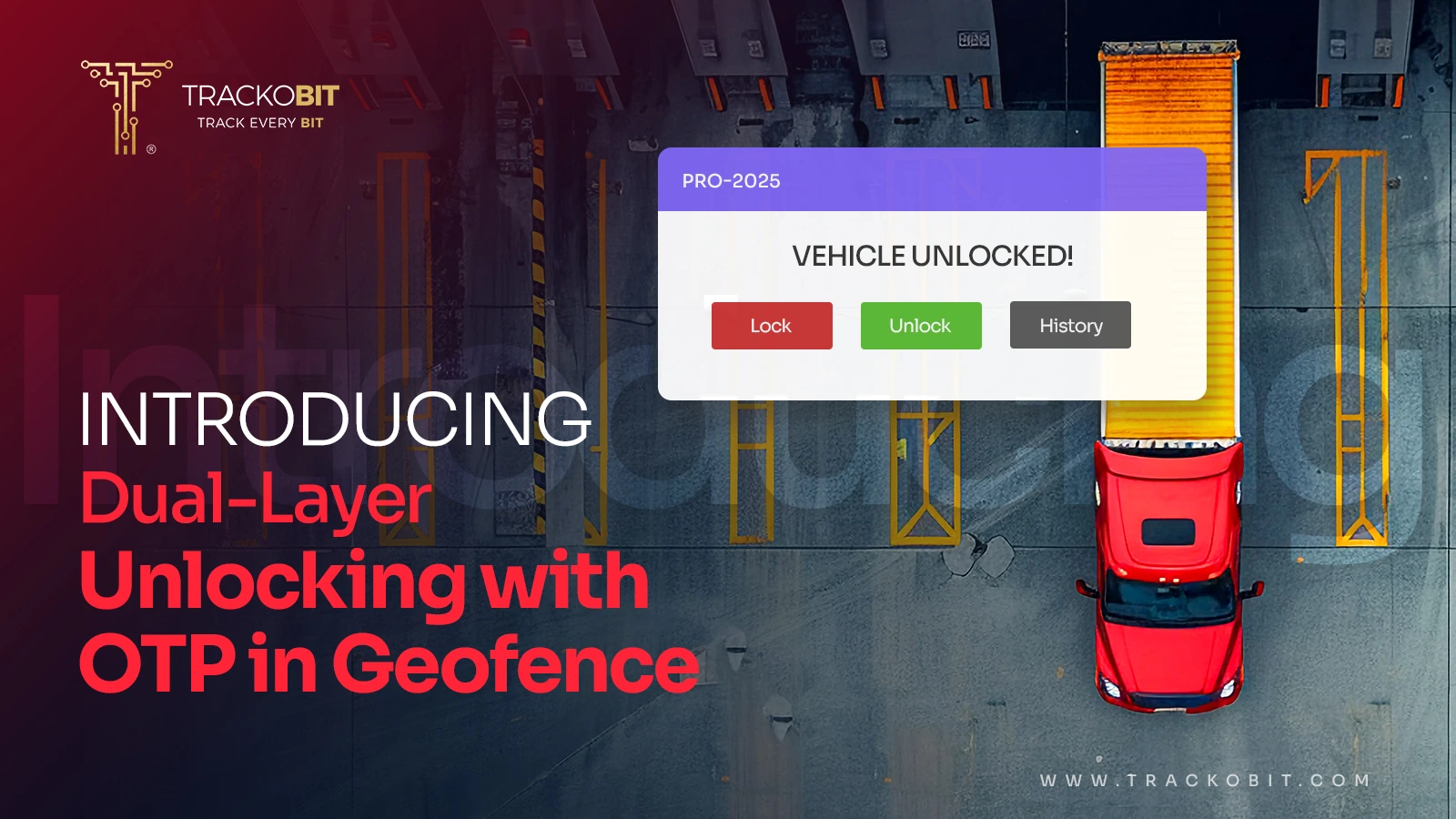
TrackoBit’s Unlocking in Geofence with OTP: Elevating Cargo Protection
Tithi Agarwal September 16, 2025TrackoBit’s latest feature – Unlocking in Geofence with OTP lets you lock out theft and unlock cargo only at the…
-
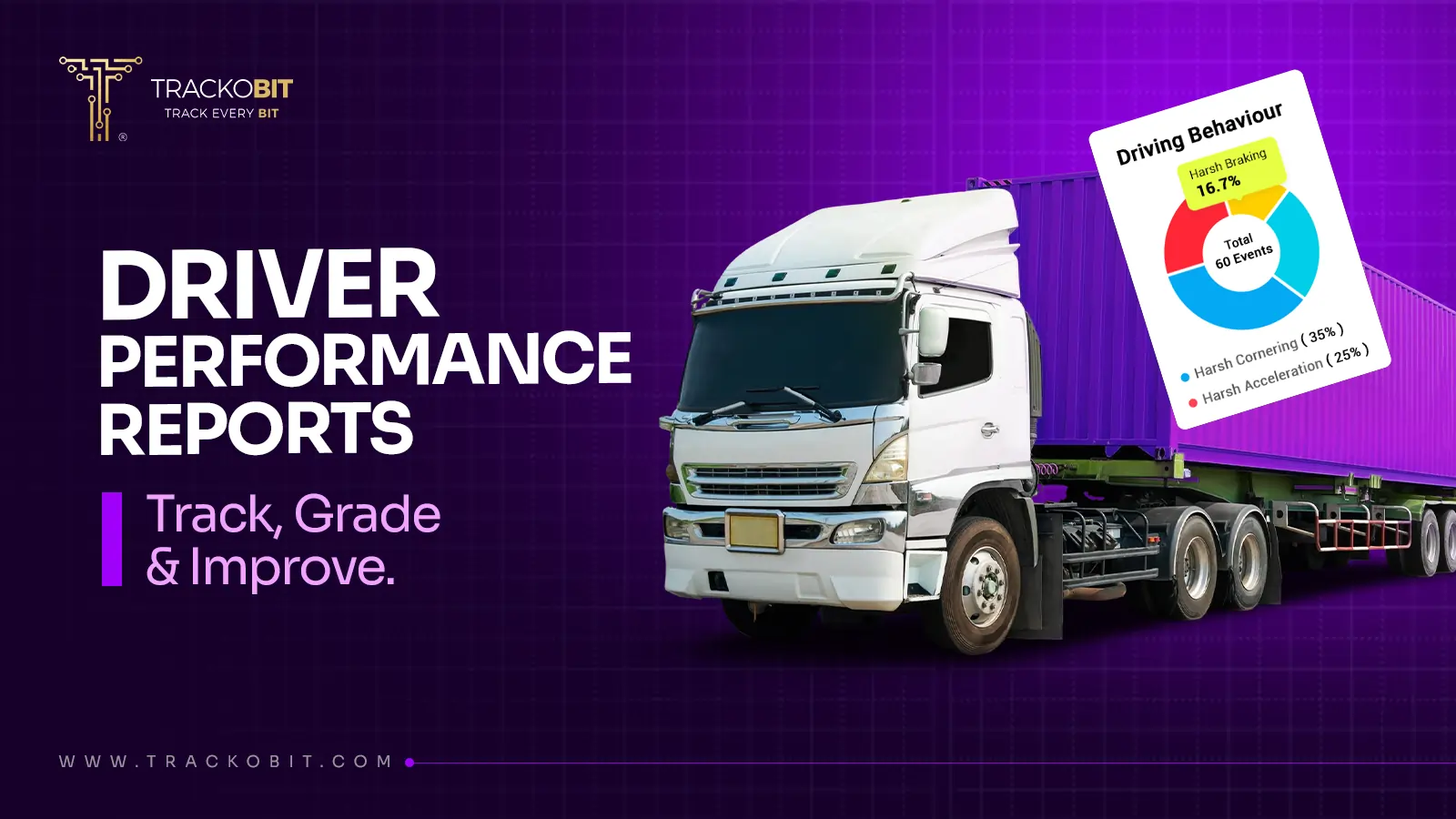
Who’s Really Behind the Wheel? Unlocking Insights with Driver Performance Reports
Tithi Agarwal August 27, 2025Identify top-performing drivers, monitor violations, and grade skills with the driver performance report. This makes fleet operations more transparent and…
-
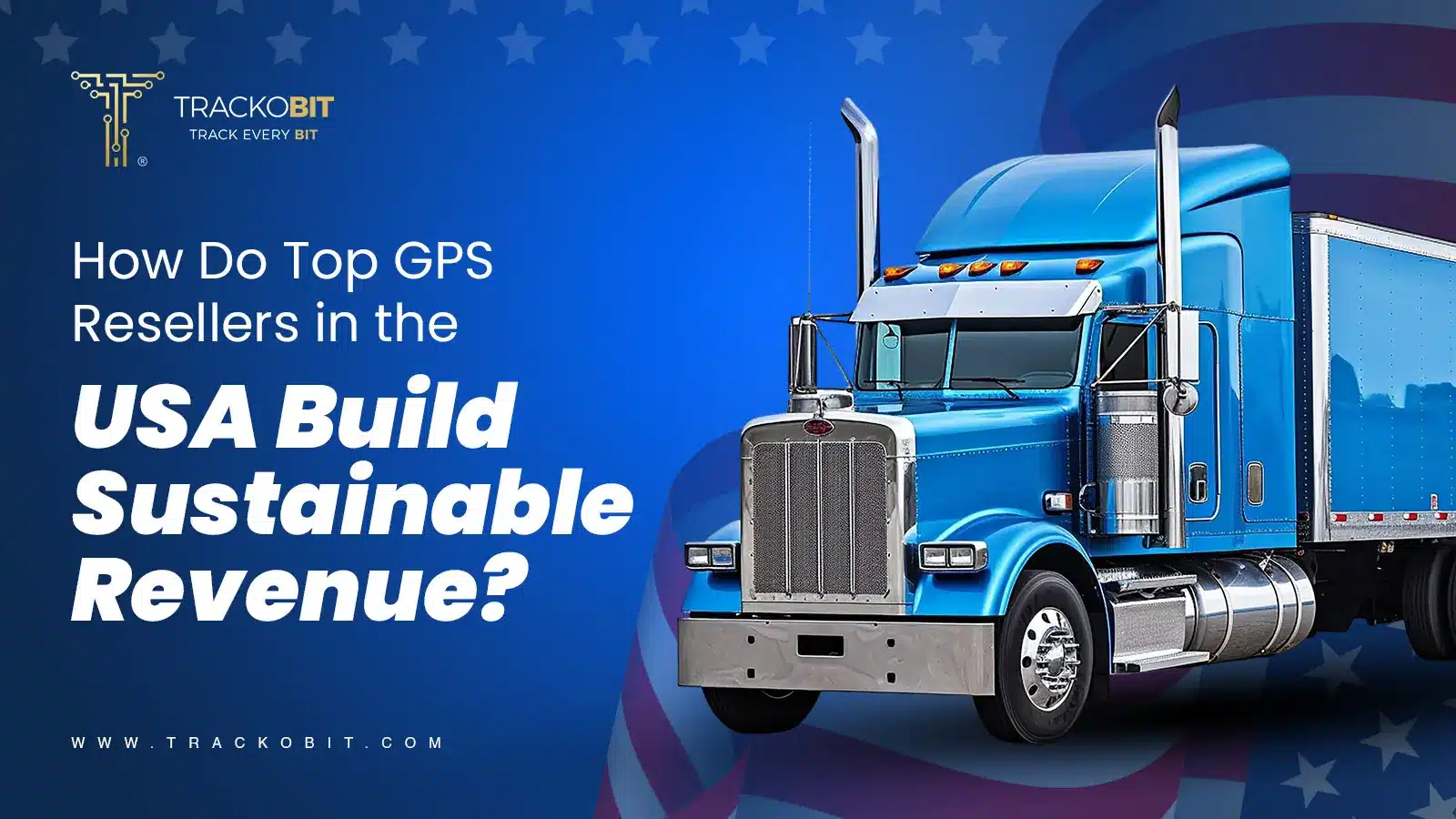
How GPS Resellers in the USA Grow Recurring Revenue with White-Label Fleet Software?
Anvesha Pandey July 3, 2025Are you a GPS reseller in the USA? Learn how to ditch one-time sales and build a recurring revenue empire…

Subscribe for weekly tips to optimize your fleet’s potential!
Your inbox awaits a welcome email. Stay tuned for the latest blog updates & expert insights.
"While you're here, dive into some more reads or grab quick bites from our social platforms!"Stay Updated on tech, telematics and mobility. Don't miss out on the latest in the industry.
We use cookies to enhance and personalize your browsing experience. By continuing to use our website, you agree to our Privacy Policy.



































